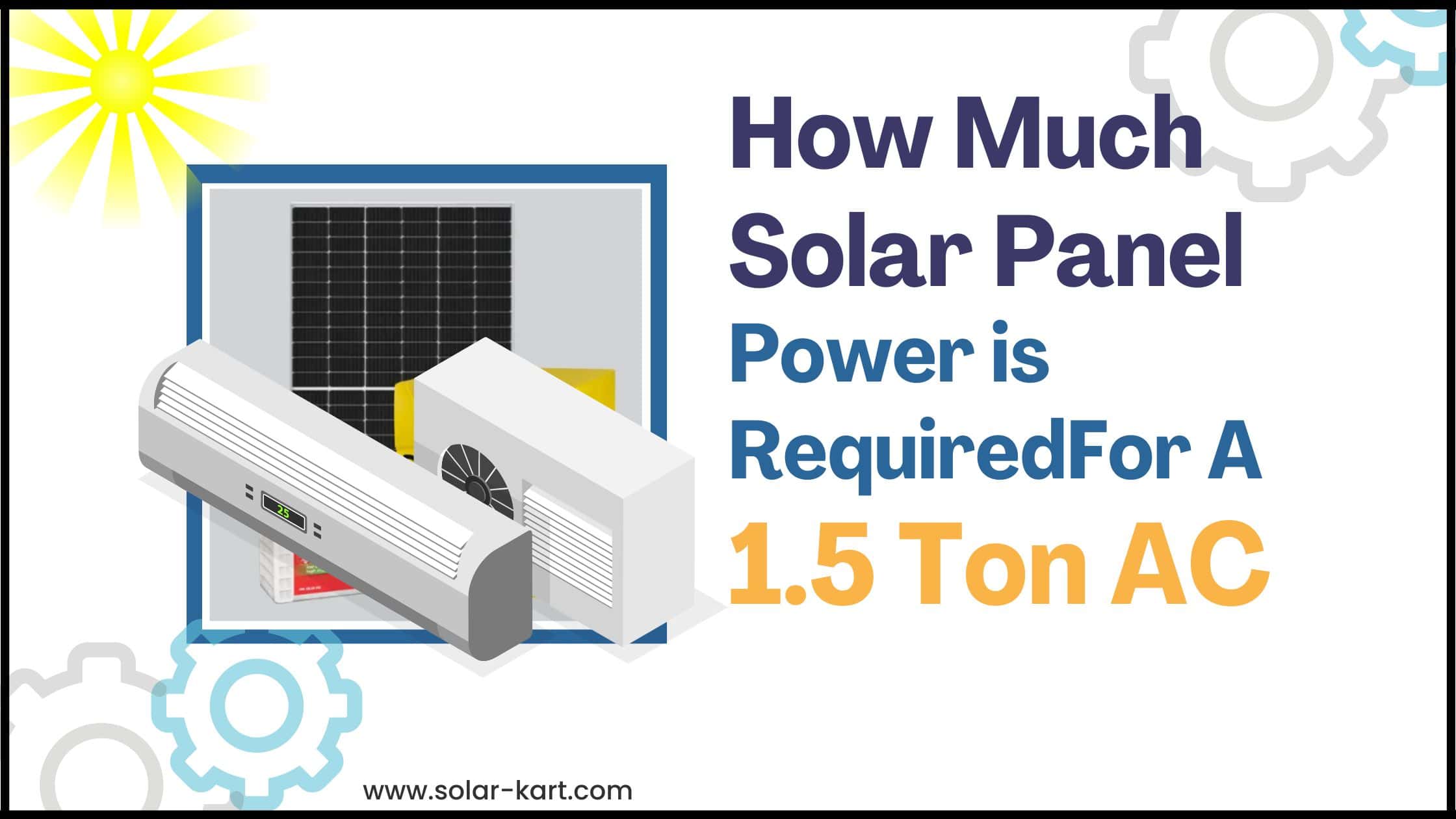Currently the world has adopted green energy and the most common energy type in the world is the solar power energy. Among them some of the most common question include, how many watts or kilowatts of solar power required to run a 1.5-ton air conditioning unit?
This is very common question among people. Cause a lots of people want to know whether their solar panel able to run a AC or not. Or how much Solar Panel power is required to run a AC.
This article will explain how to find out how much power is required, as well as other relevant aspects of powering a Solar powered 1.5ton AC unit shall be used.
Understanding the Basics
Before diving into the calculations, it’s important to understand a few key terms:
- Ton: In the context of air conditioning, a “ton” refers to the cooling capacity of the AC. A 1.5-ton AC can remove 1.5 tons of heat per hour, equivalent to 18,000 BTUs (British Thermal Units) per hour.
- Watt (W) and Kilowatt (kW): These units measure power. 1 kW equals 1,000 W.
- Kilowatt-hour (kWh): This is a unit of energy. If a device consumes 1 kW of power for one hour, it uses 1 kWh of energy.
Power Consumption of a 1.5 Ton AC
To determine the number of solar panels needed, we first need to know how much power a 1.5-ton AC consumes. Typically, a 1.5-ton AC unit consumes about 1.5 kW per hour. However, this can vary depending on the efficiency of the unit and other factors such as usage patterns and local climate conditions.
Daily Consumption: If the AC runs for 8 hours a day, the daily consumption would be:
Daily Consumption=1.5 kW×8 hours=12 kWh
Calculating Solar Panel Requirements
Now, let’s calculate the number of solar panels required to produce 12 kWh of energy per day.
- Solar Panel Output: The output of solar panels depends on several factors, including their efficiency, the amount of sunlight they receive, and local weather conditions. On average, a standard residential solar panel (300 watts) produces about 1.2 kWh per day.
- Number of Panels: To find out how many panels are needed, divide the daily energy consumption by the daily output of one panel.

So, approximately 10 solar panels are required to power a 1.5-ton AC for 8 hours a day.
Factors Affecting the Number of Panels
Several factors can influence this number:
- Location: The amount of sunlight varies significantly by location. Areas closer to the equator receive more sunlight year-round compared to those further away.
- Panel Efficiency: Higher efficiency panels produce more electricity from the same amount of sunlight. Panels with higher wattage (e.g., 350W or 400W) can reduce the number of panels needed.
- Energy Consumption: Actual energy consumption may be higher or lower depending on the usage pattern of the AC.
- System Losses: Inverters, wiring, and other system components can introduce losses, reducing the overall efficiency of the system. Typically, a 20% loss is considered for these inefficiencies.
Accounting for System Losses
Considering a 20% loss in efficiency, the adjusted number of panels would be:

Rounding up, you would need about 13 panels to account for system losses.
Practical Considerations
When planning a solar installation, consider the following practical aspects:
- Roof Space: Ensure you have enough roof space to install the required number of panels. Each panel typically measures about 1.6 meters by 1 meter.
- Orientation and Tilt: Panels should be installed at an optimal angle and orientation to maximize sunlight exposure.
- Shading: Avoid areas with shading from trees, buildings, or other obstructions, as shading can significantly reduce panel efficiency.
- Battery Storage: If you plan to run the AC at night or during cloudy days, consider installing a battery storage system to store excess energy produced during the day.
Cost Considerations
The cost of a solar power system varies based on several factors, including the number of panels, type of inverter, installation charges, and any additional components like batteries. Here are some rough estimates:
- Solar Panels: On average, a 300W panel costs around $200-$300.
- Inverter: A good quality inverter for a home system can cost between $1,000 to $2,000.
- Installation: Installation costs vary widely but generally range from $1,000 to $5,000.
- Batteries: If opting for battery storage, costs can add several thousand dollars, depending on the capacity.
Conclusion
Powering a 1. 5-ton AC with Solar Panel is possible and can make a huge difference in minimizing electricity bills and going green. In this case, it requires approximately 13 solar panels to generate enough electricity to cater for the energy needs of the AC, given a system efficiency and other losses that are involved.
However, always seek the services of a professional solar installer who will carry out an analysis based on your particular area and needs.
Read also: Which Type of Solar Panel is Best?
